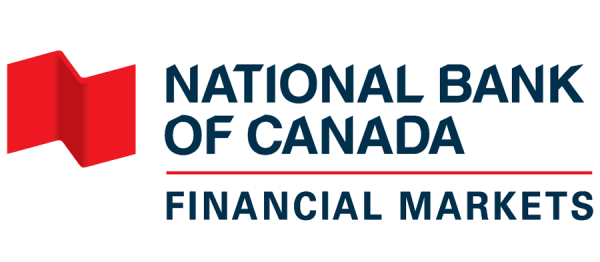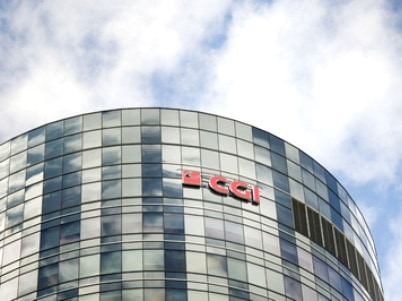
It was a bumpy ride for technology names in 2021 and with an ongoing market rotation away from the sector now pushing into January, there’s uncertainty in the air about how investors should approach the new year. Fear not, says National Bank Financial, who on Sunday delivered its technology thesis on 2022, including recommendations for five stocks for the year ahead.
Looking back, last year’s ups and downs now come across clearly through a comparison between the S&P/TSX Composite Index, which delivered a 2021 overall return of 21.7 per cent, and the TSX Information Technology Index, which came in lower but still respectable at 18.3 per cent. But notably, that relative underperformance came about mostly in the last quarter of the year, since the TSX Info Tech Index was actually outperforming the S&P/TSX Composite by the wide margin of 18 per cent as of the month of August. Meanwhile, the general, sector-wide rotation away from tech has been going strong since November.
Thus, the question is, say National Bank analysts Richard Tse and John Shao, should investors be resetting their valuation expectations due to the current climate? Not really, they argue, since once we look past the short term where tech growth names are at a greater risk of underperforming, the longer-term view should see outsized performance from a number of names as a result of the recent and dramatic pullback.
“The fundamental reality is while we’ve seen a pullback in sentiment, none of the secular themes have changed,” Tse and Shao write. “Some of those notable themes include Digital Transformation (specifically the application of AI), eCommerce and Supply Chain, and it’s our view that long-term investors in our market leaders will be rewarded.”
“So, while the short-term is obviously a shift in sentiment that’s been put into the spotlight once again by rising rates, Fed tapering and the heightened inflation backdrop, we’re still bullish on many of our names – acknowledging that you’ll have to wait longer for the ‘flyers’ under the current backdrop. That said, we think 2022 will be a year of stock selection,” the analysts said.
Focusing on the valuations, Tse and Shao say the pullback has meant that today’s tech multiples have nicely dropped closer to their three- and ten-year averages. For the Software, IT Services and Hardware companies, current price-to-earnings are at 27.5x, 20.1x and 15.7x, respectively, which averages out to a P/E of 21.1x — and that number compares to Tech’s three- and ten-year averages of 22.0x and 20.8x, respectively.
On EV/Sales, the current breakdown in tech is 7.8x for Software, 5.6x for IT Services and 4.9x for Hardware, which averages out to 6.1x and compares to the three- and ten-year averages at 5.9x and 4.2x, respectively.
On the topic of initial public offerings, Tse and Shao commented on the outsized production in 2021 where a record 14 tech IPOs transpired compared to there having been only 12 in total over an 11-year stretch ended December 2019. The analysts noted there’s been a broad range of returns from the recent crop which on average have underperformed the market and they argued that the relative performance of a given new name has so far correlated most strongly with EBITDA margin, a change from the previous year’s correlation with revenue growth.
“No doubt, the objective data is telling us that investors are getting more cautious when it comes to IPOs,” Tse and Shao wrote.
Thematically, the analysts pointed to three broad movements they see as notable and investable in 2022, starting with artificial intelligence, which has begun to really show its value to companies, according to the analysts, ushering in a “main street commercialization” of AI. The analysts point to a McKinsey survey which found that 44 per cent of respondents reported cost savings from AI adoption in the business units where it’s being deployed, while 63 per cent reported revenue increases from AI adoption.
“In our view, a growing investable universe is also supported by a constructive backdrop with inflation and labour shortages forcing companies to look for ways to optimize their operations,” Tse and Shao wrote. “With IDC estimating AI will be a $406 billion market in 2022 growing to $554 billion in 2024, we think 2022 is where we’ll see main-stream adoption scales.”
On the e-commerce front, Tse and Shao say the space continues to impress with US online sales up 16.1 per cent year-over-year in a 2021 that was supposed to bring in the full-fledged return of physical sales. Within online retail, the analysts pointed to social commerce and cross border commerce as trends likely to shine in the year ahead.
Finally, Tse and Shao argued that with supply chain cracks still showing, the expectation will be that companies in 2022 will continue to invest in supply chain management technology, a space that is expected to grow at a CAGR of about 9.6 per cent through 2026, according to Statista data quoted in the NBF report.
“As the boom in e-commerce has made it easier than ever to shop for your favourite products and services, we expect demand to continue to outpace supply in the near-term – accentuated by a falling business inventory/sales ratio that leaves a smaller margin for error,” Tse and Shao wrote.
As for companies connected to the above themes, Tse and Shao pointed to Copperleaf, Coveo, Kinaxis, OpenText and Telus International as AI-related ideas, Lightspeed, Nuvei, Pivotree and Shopify as e-commerce-related and Kinaxis and Tecsys as supply chain management names.
On NBF’s five best bets for the year, the analysts started (in alphabetical particular order) with global IT services company CGI Group (CGI Group Stock Quote, Charts, News, Analysts, Financials TSX:GIB.A), which Tse believes is moving back to its pre-COVID growth trajectory both organically and inorganically with the potential for even strong growth than was present before the pandemic.
Tse said that in anticipation of higher business activity, CGI is looking to add about 15 per cent to its headcount annually over the next three years in all its global delivery centres, that the company has a renewed focus on increasing its IP-related revenue to the 30 per cent mark and that CGI is accelerating its metro-market acquisition growth strategy with a target to deploy $1 billion over the next 12 months.
“Bottom line, CGI’s operating prowess and focus on profitable growth is undervalued in a market that’s been drawn to high growth (valuation) names. We reiterate our ‘Outperform’ rating with a $135 price target (unchanged) which implies a target valuation of 13.5x EV/EBITDA on our F22 estimates,” Tse wrote.
The analyst’s $135 target represented a projected one-year return of 27 per cent. (All returns are as of the report’s publication date of January 9 and all figures are in Canadian dollars except where noted otherwise.)
Next up is supply chain software company Kinaxis (Kinaxis Stock Quote, Charts, News, Analysts, Financials TSX:KXS), whose RapidResponse platform should remain in high demand in the constrained environment, according to Tse. At the same time KXS’s triage model RapidStart is also getting attention and presents an opportunity to expand Kinaxis’ total addressable market, according to the analyst, who maintained his “Outperform” rating and $225 target price for KXS, which represented a one-year return of 42 per cent.
“We continue to believe KXS’s valuation does not fully value a ‘normalized’ financial run rate looking ahead, particularly given that the total addressable market has expanded meaningfully from 3,000 to 7,000 customers,” Tse said.
Digital investigation software company Magnet Forensics (Magnet Forensics Stock Quote, Charts, News, Analysts, Financials TSX:MAGT) IPO’d last year and saw its share price spike and then fall off just as dramatically. NBF analyst John Shao called Magnet a good example of an early-stage named paired with a strong profitability profile coming from its unique advantages in a market with a high entry barrier. Further M&A will also be of benefit this year along with organic growth, Shao said, reiterating his “Outperform” rating and raising his target to $55, which represented a projected return of 91 per cent.
“We believe Magnet Forensics is an early leader in this market with a suite of competitive offerings to target both the public and enterprise clients. The quality of its business model is further underscored by its financial performance with strong growth and profitability profiles,” Shao said.
Payment solutions company Nuvei (Nuvei Stock Quote, Charts, News, Analysts, Financials TSX:NVEI) had a rough back end to 2021 after a short-seller report did damage to its share price, but Tse sees the payments space continuing to undergo a meaningful transition, with Nuvei pegged to be at the forefront and a disruptive player with outsized growth relative to the sector.
“Nuvei continues to expand in high growth verticals as demonstrated by its most recent acquisitions of Mazooma and Simplex, which have pushed the company further into both Crypto and the US gaming markets. Recent partnerships with brand names such as BetMGM (online gaming) & FTX (crypto exchange) highlight the Company’s intentions in those high growth segments,” Tse wrote.
Tse reiterated his “Outperform” rating and US$160 target price which represented a one-year return of 152 per cent.
Finally, Tse continues to like TELUS International (TELUS International Stock Quote, Charts, News, Analysts, Financials TSX:TIXT) for its positioning within the growth areas of the IT Services industry by providing in-demand services like content moderation, digital customer experience and data annotation.
“We believe TI is overlaying unique technology to its services to drive expanding margins through automation, topical in the current environment. Together, the combination of outsized revenue growth and potential for expanding margins represents an opportunity in this stock, especially considering the Company already has industry leading margins,” Tse wrote.
With the report, Tse reiterated his “Outperform” rating on TI and US$50 target price, which translated to a projected return of 66 per cent.
Leave a Reply
You must be logged in to post a comment.





 Share
Share Tweet
Tweet Share
Share




Comment